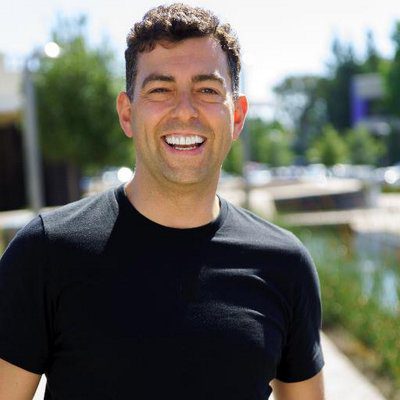Poor experiences paying healthcare bills drove two company founders to come together to make it simple for United States consumers to manage expenses.
PayGround co-founder and CEO Drew Mercer’s background is in healthcare IT and commercial leadership. His career has taken him to GE, DaVita, and Experian.
Within a few weeks in 2018, Mercer welcomed his third child and then was diagnosed with cancer. That brought bills, more than 20 of them which involved phone calls, visiting various portals, and mailing checks.

“That was the moment in which we said, ‘let’s change it, it doesn’t have to be this way,” Mercer recalled. “And so what we’re looking to do is to disrupt the way individuals and families pay their healthcare bills, simplifying it so they can do it all in one place.”
Mercer explained that you couldn’t solve the problem by simplifying the process just for the consumer.
Providers must reconcile those bills into their existing workflows in a streamlined fashion. The most challenging task was integrating into the hundreds of different payment systems from a technology standpoint.
Sync with billing
PayGround’s technology can sync with any billing system through any API, Mercer explained. That allowed the creation of an iOS and Android mobile app, allowing people to pay any medical bill.
“We’re providing this place for healthcare payments — simple financial transactions, so patients can easily pay bills and get it off their radar, so they can focus on what really matters in life,” Mercer said.
When folks receive a bill, they can add that provider’s details, and PayGround pays on their behalf. Providers can also register, and if they join the network, they can receive an electronic deposit the next business day. For providers not in the network, they get mailed a check.

Plastiq chief product and technology officer Stoyan Kenderov was once Lending Club’s CPO, founded several startups, and worked at Intuit.
The seeds for Plastiq were sown when co-founder Eliot Buchanan unsuccessfully tried to pay his Harvard tuition with a credit card and was told it wasn’t possible.
He vowed to change that. In the ensuing decade, thousands of businesses, schools, municipalities, and even the Canada Revenue Agency, Canada’s IRS equivalent, accept Plastiq.
Credit card reluctance
Kenderov said that reluctance to accept credit cards is common in healthcare, as providers have issues with merchant fees and personally identifiable information.
He added it is a considerable problem for B2B payments where, even though most companies have several credit cards, they cannot use them as much as they’d like.
“There’s this massive, massive discrepancy in the market that we’re trying to close,” Kenderov said. “There’s issued credit ready to go, and businesses cannot use it to pay vendors. And that’s where we come in.”
Both Mercer and Kenderov said the PayGround/Plastiq union makes complete sense. Like Mercer, Kenderov noted that he receives a stack of medical bills his family generates each year.
“If I want to pay with a credit card, there is a form,” Kenderov said.
“Holy cow, we’re in the 21st century, and I need to scribble my credit card information and fax the thing. I don’t have a fax machine. And then, 10 days later, when they start processing, maybe my card has no more limit left because I paid a couple of other things. So it’s completely broken, and it’s mind-bogglingly backward.”
Flexibility a must
Kenderov said the added payment flexibility is a must as out-of-pocket healthcare expenses soar.
“Many people are paying with their HSA cards or their FSA cards, and that is a very big need in today’s health care market. We’re seeing over the last 10 years high deductible plans increasing over 200%, out of pocket costs are increasing close to 60%.”
Mercer said difficulties paying out-of-network providers was a barrier PayGround had to address. In Plastiq, he saw a company addressing that very issue. Using Plastiq Connect APIs, PayGround quickly integrated the technology into its PayGround Digital Wallet.
The comparative ease by making the payment is the best marketing possible, Kenderov and Mercer said. Users can upload their healthcare provider’s information onto the app. Maybe the provider is already on the network, and perhaps they join later on. For those that have not, there is a built-in incentive.
“Ultimately, once we pay them with that paper check via the Plastiq partnership, we are inviting them to join our network for free just get paid faster versus snail mail,” Mercer said.
Huge opportunity
Kenderov said the original vision was for Plastiq to offer all services independently. Still, companies, beginning with credit card providers, began approaching them, attracted by the higher usage of customers using Plastiq. They just needed the Plastiq’s rails before designing their own unique brand experience. Nothing is required beyond a couple of APIs and an SDK.
Plastiq’s opportunity in B2B payments is huge, Kenderov said. Businesses, especially during the pandemic, have irregular cash flows. Those few lucky enough to qualify for a loan have to wait 30 days.
Yet they have room on their credit cards, likely thousands or maybe millions that could immediately put to work pay advertisers, suppliers, and contractors.
“We have a ton of businesses, for example, that got busy buying sanitary equipment and masks from overseas when the pandemic hit,” Kenderov said. “They didn’t have the money to buy these truckloads of masks and sanitary equipment. With Plastiq, they could use their credit cards.”
There’s an additional incentive for businesses to adopt Plastiq, Kenderov said. A free card acceptance solution allows companies to send links to customers who may want to pay by credit card. The business always receives 100% while the payer is assessed a fee.
The solution markets itself as notices are sent into the marketplace.
Healthcare wallet
Mercer said PayGround’s ultimate goal is to become everyone’s comprehensive healthcare digital wallet. The Plastiq partnership will help them get there as it allows them to move into the hospital market. They also see an opportunity in consumer education.
“That is something we’re building out as we speak,” Mercer said. “And we’re excited to introduce not only to be able to pay your bill but also understand how your insurance was applied to give them confidence that it was applied appropriately so they can make that payment.”


